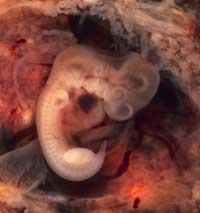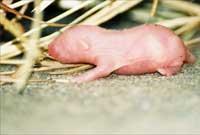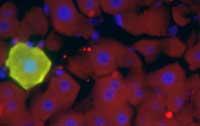Carpets that can change old beliefs

Research has been conducted at Shanghai Jiao Tong University, and researchers have stated that some sterilized mice have managed to have offspring by transplanting a certain group of ovarian cells from other adult mice. These cells were not adult eggs, of course, that would not be new. They were cells that produce cells that will become eggs from adult mice.
Eggs form in ovulation, in adult females. In a specific phase of embryonic development the precursors of these eggs are formed: oocytes. In turn, obocytes come from certain embryonic cells.
Well, oocyte precursor cells are the ones that Chinese researchers have transplanted into sterile mice. Until now it was considered that these pioneer cells only appeared in the embryonic phase, but researchers have suggested that they are also present in adult mice.
The process step by step

Some sterilized mice have had offspring transplanting a certain group of ovarian cells from other adult mice. (Photo: M.R. Vogt)
Nature Cell Biology has announced that, first, these pioneering cells were identified and isolated from the surface of the ovaries of adult mice. Subsequently they were introduced a gene that produces a fluorescent green protein so that they can undoubtedly know the cells. Viruses were used to introduce the gene, which introduced the gene into the viruses and infected the cells with those viruses. Thus, viruses incorporated their genome into infected cells and, among other things, cells acquired a gene to form a fluorescent protein.
The cells were introduced into ovaries of previously sterilized female mice. The drug used for sterilization destroys the eggs and oocytes of mice, so they were left without production. However, once the cells were introduced, most mice had offspring. When analyzing the pups, a third of them had the fluorescent protein gene. Therefore, it is evident that these mouse puppies come from grafted cells.
Research bittersweet
For these scientists it has been a great achievement to show that some mouse puppies were born from the cells they had introduced. However, only a third of the offspring generated had the gene that shows it. Where did everyone else come from if they were sterilized by females?

Scientists used a gene that provides a fluorescent green protein to undoubtedly differentiate puppies. (Photo: (© Science).
Scientists who carried out the research claim that viruses used to introduce the gene that provides the fluorescent protein could not infect all cells, so they have not been able to detect offspring from all cells introduced into the ovaries.
Numerous scientists unrelated to this research have proposed alternatives and have been very cautious about this news. For example, they claim that the process of sterilization of mice may not be entirely effective and that some offspring come from the eggs that mice had. Some have not wanted to give much credibility to the newcomer and have stated that it is imperative that another research group repeat the results of China. If what they say were checked, it would be shown that adult females can form new eggs, in addition to those produced in the embryonic phase. And this would radically change what we so far consider true.
Published in 7K.
Buletina
Bidali zure helbide elektronikoa eta jaso asteroko buletina zure sarrera-ontzian











